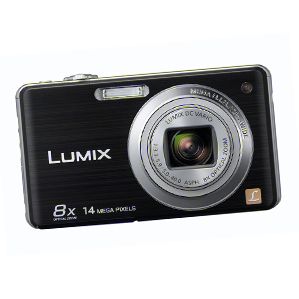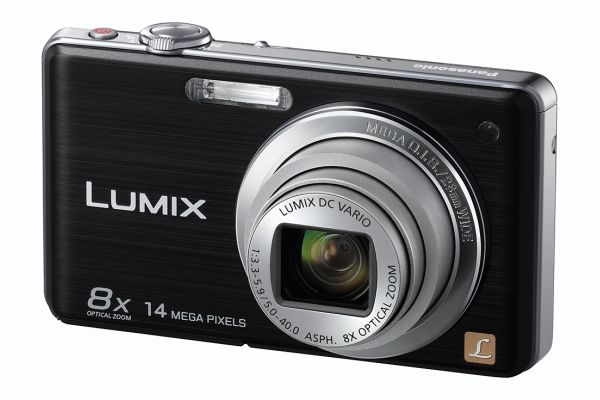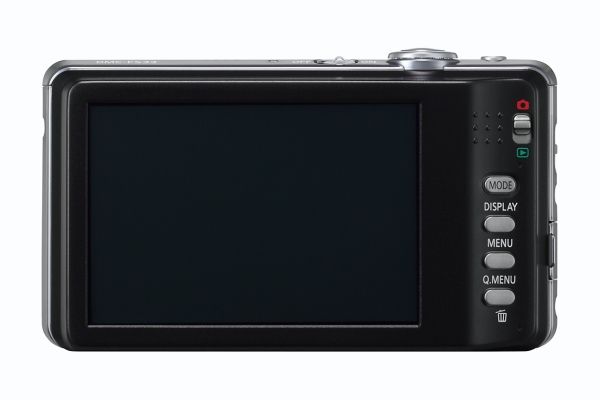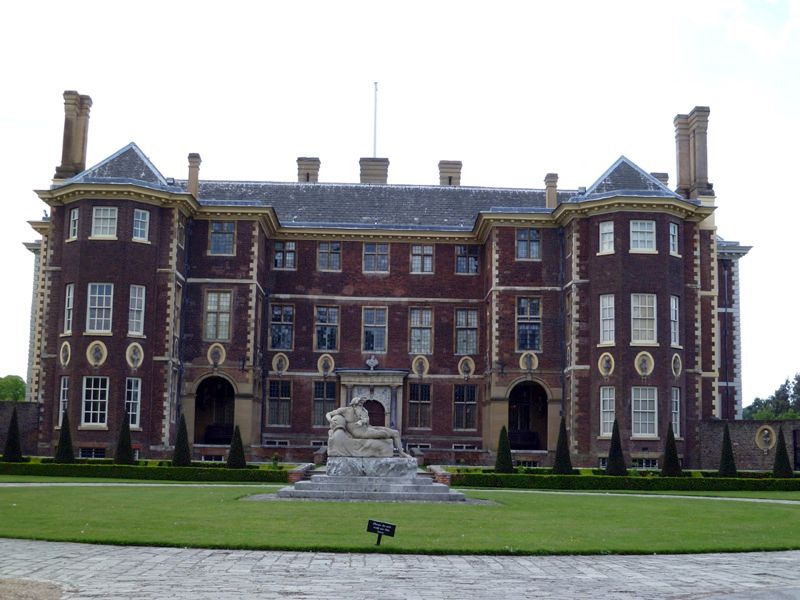Available with red, silver or sober black bodywork, from the front the 14.1-megapixel Lumix DMC-FS33 resembles your regular point and shoot pocket compact, and to an extent from the back it does too. However, turn the slender camera on via the top plate on/off switch, start playing with it and you'll discover the unassuming exterior - and its modest £200 manufacturer's asking price - disguises the fact that this is also a touchscreen (or to quote Panasonic "touch panel") model. The story here is high-grade features yet user-friendly operation.
Our quick take
The 14-megapixel Panasonic DMC-FS33 ticks most of the boxes for the latest must haves, making it a relatively future proof option for anyone looking for a broader than average focal range within pocket camera dimensions, a high still image resolution suitable for poster sized prints, HD movies and to dip a toe in the water of touchscreen operation all within the one affordable package.
The FS33 offers warm colours and sharp results, but if we're being unduly critical, occasional colour cast/white balance issues. That, along with the fact that zoom is disabled when shooting movies, is really the only black mark against the camera. It's a capable, well-featured product at the right price, meaning that undemanding camera users happy to just point and shoot won't find much here to take issue with.

Panasonic Lumix DMC-FS33 compact camera - 4.0 / 5
| FOR | AGAINST |
|---|---|
|
|
Like we found with the recently reviewed FP3 model, also from Panasonic, the numerically similar FS33 hedges its bets (and broadens appeal) by dividing operation between prodding at virtual buttons on the sufficiently large 3-inch screen and the physical controls ranged to the right of it. There's no optical viewfinder as an alternative, and it takes a little while to get used to the fact that an actual button - the "mode" button in particular - has to be pressed first to enable anything to happen via the 230k-dot resolution LCD.
Weighing 162g with accessories and sporting dimensions of 100 x 56.5 x 27.2mm, the FS33's other big talking points are that class-leadingly high resolution and 28mm wide-angle 8x optical zoom lens - operated via a lever encircling the shutter release button and supported by Panasonic's "mega" optical image stabilisation mechanism - ferreted away within the body when the FS33 is in dormant state. The zoom glides smoothly through the entirety of its range in just under 3 seconds.
When the camera is activated the lens extends to maximum wide-angle setting ready for the first shot, a process taking all of 2 seconds. Committing a 14-megapixel image to memory takes a further three. This being a Lumix, there's an additional Extra Optical Zoom function accessible extending the reach to a 16.9x equivalent, but since this only utilises a central portion of the high resolution sensor, the caveat is a resolution drop to 3 megapixels.
Response times are commendably swift however, and Panasonic claims the official time it takes for "sonic speed" auto focus to lock crisply onto target is 0.35 seconds; under the FS33's bonnet it's powered along by a Venus Engine IV processor. Battery life is good for 300 images from a full charge, which is respectable for its class.
Majoring on ease of use, also featured is Panasonic's iA (intelligent Auto) mode for fully automatic point and shoot operation, and is pretty reliable with it. An Intelligent Scene Selector chooses from whichever preset-set scene mode is most appropriate from macro, portrait, scenery, night portrait, night scenery or sunset modes. Here the iA button has its own top plate button slap bang next to the shutter release button for speedy access.
Also helping matters along is the Q.Menu (Quick Menu) button, the bottom of five controls at the rear. Using this, photographers are able to take a shortcut to the typically most frequently used settings, including an ISO range stretching from ISO 80 to 1600 (with up to ISO 6400 accessible in High Sensitivity mode). The Panasonic additionally offers a wide choice of 24 scene modes and there's a further My Scene Mode option so users can quickly jump to favourite selections without having to first tab past the other options.
Of course also included here is the by-now regulation issue 1280 x 720p HD movie mode at 30 frames per second (but no HDMI connectivity, just one combined AV/USB out port), recording in widely accessible Motion JPEG format. It's a shame, however, to discover that the Panasonic's optical zoom is disabled when shooting HD video, doubtless this omission being down to its noticeable mechanical buzz.
Writing to SD, SDHC or SDXC cards or 40MB internal memory, the FS33 produces well-defined shots that require minimal if any processing straight out of the camera and in that respect the Lumix is a reliably consistent performer. If we've a criticism it's that pictures taken at maximum telephoto can come out soft and colours occasionally look unrealistically over-saturated - particularly natural expanses of green and blue.
To recap
The Panasonic DMC-FS33 boasts a bang up to date feature set for a pocket model, only truly missing out as regards lack of HDMI output. The price is just right, pictures are produced with the minimum of fuss once the user has become familiar with the tandem button/touch screen operation, though it's a shame the optical zoom stays put when recording HD movies



